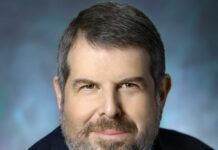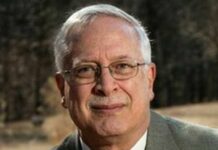By Bob Zeidman
Can a house of worship be welcoming and secure? In these times, it must be both and, despite what many people think, these goals are not at odds with each other but actually synergistic.
After 9/11, I was asked to head the security committee at my synagogue in Northern California. As with most things I do, I dove in, doing extensive research, participating in training, and eventually becoming a resource for the Bay Area Jewish community.
My overall finding was that security was lax at just about every Jewish institution. In my synagogue, security systems were nonfunctioning. Exit signs led to dead ends. I discovered that the children’s play area could be locked from the outside, creating a potential trap.
Walkthroughs with police officers and fire marshals had missed these things. When I asked to see the security plan, everyone was certain it existed, but no one could find it.
I was allocated a small budget, but it was later revoked to be applied to “more important things.” So I did the low-budget things: creating and distributing a formal plan, posting maps with escape routes and rearranging exit signs to lead to actual exit routes. I don’t know if the security system was ever repaired because that required money.
In general, security systems were seen as an expense and a burden. High Holidays (Rosh Hashanah and Yom Kippur) were the only time that security was taken half-seriously. I discovered that the guards we hired each year were just big guys in dark suits; they had no formal training in security procedures. And they carried no weapons. Many congregants and clergy felt that weapons would frighten people. Of course, that’s what they’re supposed to do; they’re supposed to frighten would-be attackers who would rather move on to a different, “soft” target without armed guards. Law-abiding citizens rarely fear armed guards, especially when they know those guards are protecting them.
In part because of its lax security and the reluctance to make changes, we joined a second synagogue, though it, too, had weaknesses. But they were more open to change, and they allocated a real budget for it. I again did the low-budget things, but I was also able to hire a real security agency with trained guards and actual weapons.
The biggest issue at both places was how to be welcoming yet also secure. Synagogues, like other houses of worship, are designed to be peaceful, comforting places — not guarded, gated fortresses. But after the horrific attacks in Pittsburgh, Poway and Colleyville, it became clear to even the most timid of congregants, staff and clergy that reality requires serious security. We can’t choose welcoming or secure; we need both.
So how can a house of worship be both welcoming and yet secure? The answer is simple, though many people just don’t see it.
Security requires congregants, staff and clergy to enact the policy of “see something, say something.” To do so effectively, you must throw political correctness out the door. If someone doesn’t look like they belong in your synagogue, church, mosque or other house of worship, don’t question yourself. Too many people chalk this concern up to prejudice.
And it is, but there’s nothing wrong with that. In the Colleyville attack, the gunman was initially welcomed into the synagogue by the rabbi despite his concerns. This is the job of a rabbi, but it must be done with extreme caution. Fortunately, in that instance, the rabbi’s security training helped rescue congregants. Being welcoming must include asking polite questions while constantly looking for anything unusual.
At my synagogue on one Friday-night Shabbat service, the rabbi came to me because there was a young man in a large pickup truck waiting in the parking lot. I walked out to the lot and welcomed him.
“Hello,” I said. “Can I help you? Is everything OK?”
The young man seemed a little nervous, which concerned me.
“No,” he replied hesitantly. “I wasn’t sure if it’s OK to go in yet.”
“Services are about to begin. Did you want to attend services?”
“Yes,” he said.
“But I’m not Jewish,” he quickly added. “I’m taking a course at the community college on comparative religion, and I want to learn more about Judaism, but I don’t want to do the wrong thing and offend anyone.”
I smiled. “It’s hard to offend anyone here. Come on in. I’ll help you learn what to do.”
He thanked me and got out of the truck. He was dressed nicely and had been polite. I observed that he didn’t have any visible weapons. I walked him into the synagogue and introduced him to the rabbi. I talked with him about his studies. He relaxed. I sat with him and explained parts of the service. Afterwards, he thanked me again. I had been welcoming but also cautious.
In summary, there are four important points to being both welcoming and secure:
1. Designate at least one person to welcome strangers. It can be the clergy if that person is comfortable with the job.
2. That person must go out of their way to be calm and pleasant.
3. That person must also look closely for signs of concern and immediately call the police if something seems wrong.
4. That person must not be politically correct or self-doubting. If something doesn’t feel right, the most prudent action is to report it.
The two attributes necessary for a house of worship can go hand-in-hand. Being welcoming means confronting strangers with friendship and openness. Being secure means confronting strangers with a high awareness of potential problems. If you have any concerns, go with your gut and report those concerns to the authorities. It’s better to report a non-problem than, God forbid, ignore a problem that results in
severe consequences.
Bob Zeidman is a creator in the field of software forensics and the founder of Zeidman Consulting and Software Analysis and Forensic Engineering.
jns.org





